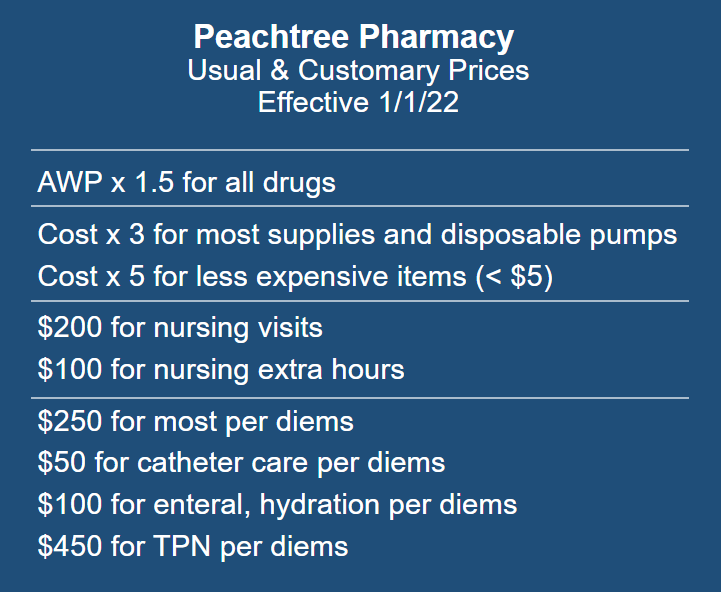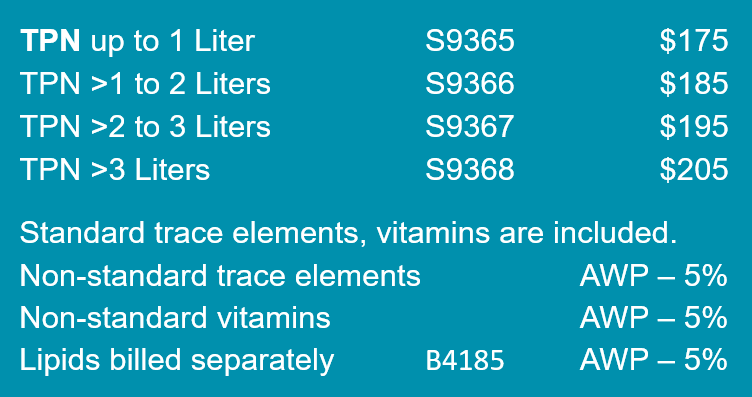5 tips for enhancing HME & pharmacy information security
Reading Time: 4 minutesBy Jerry Dennany, Chief Technology Officer at Brightree As an HME or pharmacy home infusion provider, your patients place their trust in you to get

By Jennifer Keiser, Sr. Director, Pharmacy Product Management, Brightree
Ask any top-performing pharmacy about their keys to financial success and you’ll hear mentions of these strategies: grow your revenue, increase your efficiency, and decrease your operating expenses. If your post-acute care pharmacy isn’t there yet, here are four ways to help you become more profitable.
Maximizing revenue begins with a database that has been customized to your pharmacy and contains your data. Every single item has a cost, so every single item should be accounted for in your inventory and pricing tables. This may sound straightforward, yet you’d be surprised how many folks take care to load the information into the system correctly initially – but then don’t spend the time to maintain them over time – so the prices and costs don’t remain accurate.
This is important because prices and costs change over time and people tend to forget about keeping up the values in their system. Instead, they’ll review and override items as they process their deliveries on a day-to-day basis. Taking shortcuts like this, combined with maintaining less than accurate inventory and pricing records, will not put you on the road to maximizing your revenue. My advice is to take the time to institutionalize the process of keeping prices and costs updated, so they remain correct.
Partnering with a vendor with a proven software platform will give you the tools to manage contracts while allowing you to automate price updates and calculations. In fact, once you load your drugs into the software, prices will keep on updating automatically.
For example, the latest e-purchasing tools will automatically update the cost of the products you purchase. And whenever you sign a contract with a new payer or you renew a contract, make sure those prices are reflected in your system. Brightree’s Contracts feature lets you set up rules that are based on published prices such as AWP and ASP. They can be expressed as a formula (see example), and they’re updated automatically as new prices are published. This benefit alone will save you considerable time and effort.

Formula-based pricing updated automatically saves time, money, and effort.
Avoid just typing in a number for each item – as those numbers will quickly become out of date. You’ll also have a tough time remembering where those numbers came from and connecting them back to your pricing strategy. Use formulas wherever possible so that the prices are updated automatically. It’s important to have a pricing strategy so that when new products are added to the inventory or when prices or costs get updated, the formulas will automatically be applied.
Always keep two types of pricing in mind. The list price is like a sticker price, the highest price you’ll ever bill. Net price is what you expect the payer to pay. Regardless of which kind of pricing you’re looking at, software solutions like Brightree have the tools that allow you to set up formulas, so the prices stay up to date.
When it comes to list prices, if you underprice, you put your margin at risk. For example, some payers pay a percentage of the list price. If you bill what you think they’ll pay, then they’re going to pay even less.
For example, if you charge $100 for an item, the payer may just automatically pay 80% of that, or $80. If you bill them $80, because that’s what you think they’ll pay, then they’ll take 80% of that and pay you $64. Likewise, overpricing your items can cause your claims to require multiple levels of manual review due to the total value of the claim. And this could cause large contractual allowances because payers will only pay their maximum allowable. So, it’s important to have a list price that’s at a reasonable level so that when you have a payer that discounts like that, you’re still maximizing your revenue.
Remember: rarely does anyone pay list price. The point is that spending some time thinking about your pricing strategy is still worth it because it supports more successful reimbursement and maximizing your revenue. In other words, strategize on your list pricing strategy and stand behind it.
The net price is what you expect the payer to pay. The price is often documented in a contract – and that’s where you’ll find the fine print. The late news commentator Andy Rooney once said, “Nothing in fine print is ever good news,” but that may not be the case when it comes to pharmacy billing. Of course, you must do your due diligence because sometimes these contracts can look like a book.
As there are often rules for every therapy, be sure to read all the details of what’s included and what can be billed separately. If you do not pay attention to the fine print, then you might miss billing some items. A good general rule is to bill for everything that the contract allows. If an item is not listed as included, then bill it. The worst that can happen is that you won’t be paid for it. But at least you tried.
 Reading the fine print is key to maximizing your revenue.
Reading the fine print is key to maximizing your revenue.
Sometimes the contract will specifically call out line items that you can bill for separately. For example, you might get a fixed rate per day for TPN formula (including trace elements and vitamins). But what if the doctor ordered an unusual or expensive trace element or vitamin? Turns out, if you read the fine print, you may be able to bill separately for those items. But if you don’t read the fine print, and don’t put those rules in your system, then you’re going to miss out on revenue.
It takes attention to detail and diligence to perform well in a world of tightening margins. And if you don’t have modern and comprehensive software to support your business, your challenges are greater. Every pharmacy needs to have software support like Brightree to rely on. Ask us how we can help you put the rules in place and keep them up to date so you can maximize revenue on an ongoing basis.

Jennifer Keiser, Sr. Director of Pharmacy Product Management at Brightree, is responsible for product strategy, feature prioritization and product roadmap for the pharmacy offerings within Brightree’s cloud-based post-acute care solutions.
She has over 25 years of experience in managing software development, support, and implementations but her true love is designing exceptional pharmacy software. Her insights on health care and technology have been published in HomeCare Magazine and Pharmacy Practice News, and she’s presented at industry events such as MedTrade, NAHC and NHIA Annual Conferences.
Jen was previously General Manager of the Alternate Care Solutions division of Mediware and a Senior Manager of Business Analysis at CVS Health, where she focused on Patient Care outreach programs in CVS’s retail pharmacy solutions.
She earned a BS in Computer Science from the University of Illinois and an ALM in Information Technology from Harvard.
Reading Time: 4 minutesBy Jerry Dennany, Chief Technology Officer at Brightree As an HME or pharmacy home infusion provider, your patients place their trust in you to get
Reading Time: 4 minutesBy Jeanette Eklund, Product Manager for Revenue Cycle Management, Brightree The Centers for Medicare & Medicaid Services (CMS) have recently proposed significant changes to the
Reading Time: 5 minutesBy Jennifer Leon, Vice President of Brightree Patient Collections at Brightree As consumer trends have pushed businesses towards providing fast, easy transactions and communication, the
Reading Time: 2 minutesBrightree customers are making a huge difference in their patients’ lives, and we’re excited to continue to support you as America’s most trusted HME software provider.

